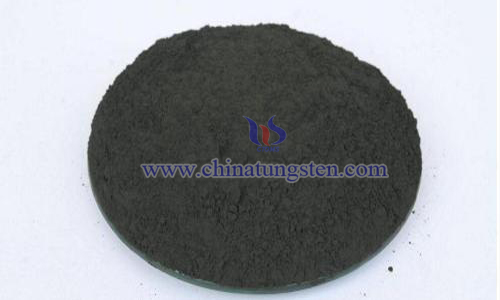Nano Tungsten Carbide Preparation Strategy
- Details
- Category: Tungsten Information
- Published on Saturday, 16 February 2019 15:43
Nano tungsten carbide is the main material of cemented carbide because of its high hardness and high strength. Two problems that restrict the development of nano-tungsten carbide cemented carbide are the difficulty in preparation of nano-tungsten carbide powder and the rapid growth of tungsten carbide particles in liquid phase sintering.

In the process of carbonization, fine tungsten carbide grows rapidly during liquid phase sintering, so WC-Co cemented carbides below submicron must be added grain growth inhibitors, usually transitional metal carbides, in which Cr3C2 and VC are the best inhibitors. The inhibition effect of inhibitors is closely related to their particle size and distribution. Therefore, some scholars proposed a carbon-assisted hydrogen reduction/carbonization method to prepare nano-tungsten carbide powder. In the process of preparing tungsten powder by hydrogen reduction, a small amount of carbon and tungsten oxide volatilization inhibitor was added. The effect of steam on tungsten oxide volatilization was reduced by the reaction of carbon and water vapor, and the inhibitor on tungsten oxide volatilization was inhibited. Finally, the particle size of tungsten powder was significantly reduced.
Ammonium tungstate 180g, anhydrous glucose 20g and chromium nitrate 1.5g were dissolved in deionized water at 80 degrees Celsius. The precursors needed for reduction were prepared by spray drying after the raw materials were fully mixed. The precursor powder was put into a tubular atmosphere furnace and reduced by hydrogen. The reduction temperature was 780 ℃, the heating rate was 10 ℃/min, and the time was 2 h. After reduction, tungsten powder was annealed at high temperature in hydrogen atmosphere, annealing temperature was 1000 ℃ and annealing time was 3 h. Carbon distribution of tungsten powder annealed at high temperature is 6.21wt%. It is mixed evenly in plough proportioner. Carbonization is carried out in tubular atmosphere furnace under the protection of hydrogen atmosphere. Carbonization temperature is 1100 ℃ and carbonization time is 4h. After carbonization, argon gas is used to passivate the powder for 30 minutes before it is released from the furnace. The obtained powder is nanometer tungsten carbide powder. The particle size of nanometer tungsten carbide powder is 76 nm under electron microscope.
The particle size of tungsten carbide prepared by the above method is 60-90 nm, and the agglomeration is not serious. After crushing, nano-tungsten carbide powder without agglomeration can be obtained. The reduced tail gas is water gas, which can be burned directly when the tail gas is small, and can be collected for fuel when the tail gas is large, which will not pollute the environment. Therefore, the carbon-assisted hydrogen reduction/carbonization method can effectively promote the development of nanocrystalline WC-Co cemented carbide.
- Tungsten Carbide Manufacturer & Supplier, Chinatungsten Online: tungsten-carbide.com.cn
- Tungsten News & Prices of China Tungsten Industry Association: www.ctia.com.cn
- Molybdenum News & Price: news.molybdenum.com.cn
- Tel.: 86 592 5129696; Fax: 86 592 5129797; Email: sales@chinatungsten.com



 sales@chinatungsten.com
sales@chinatungsten.com